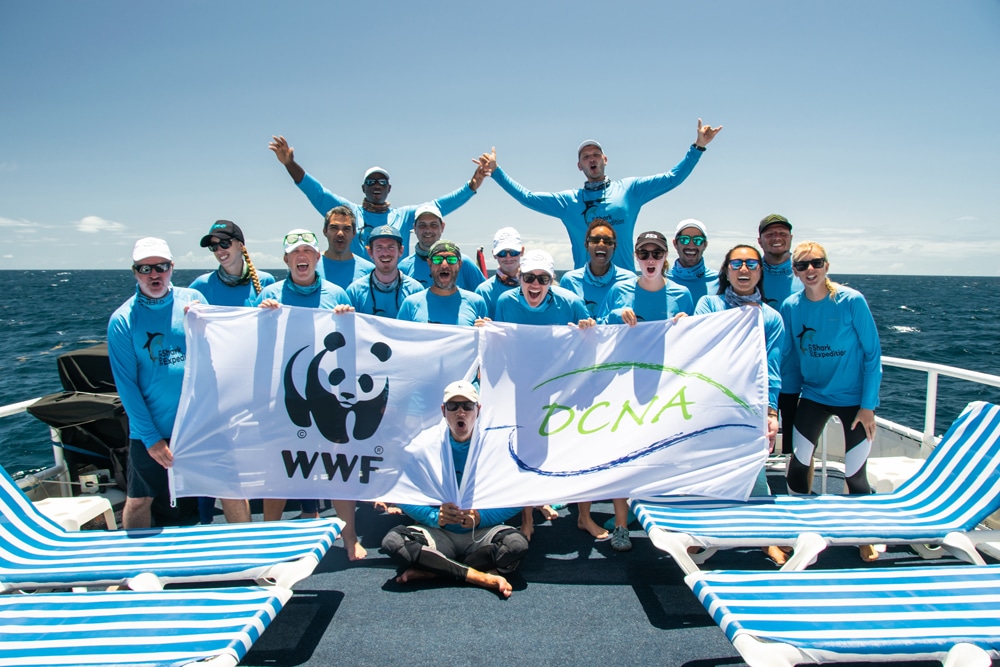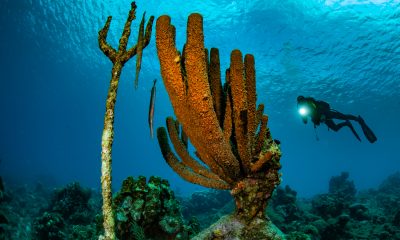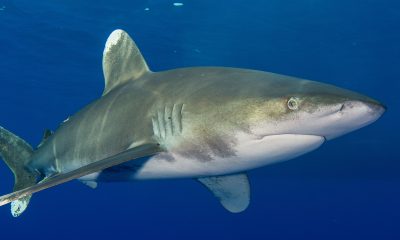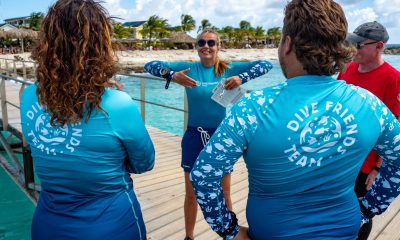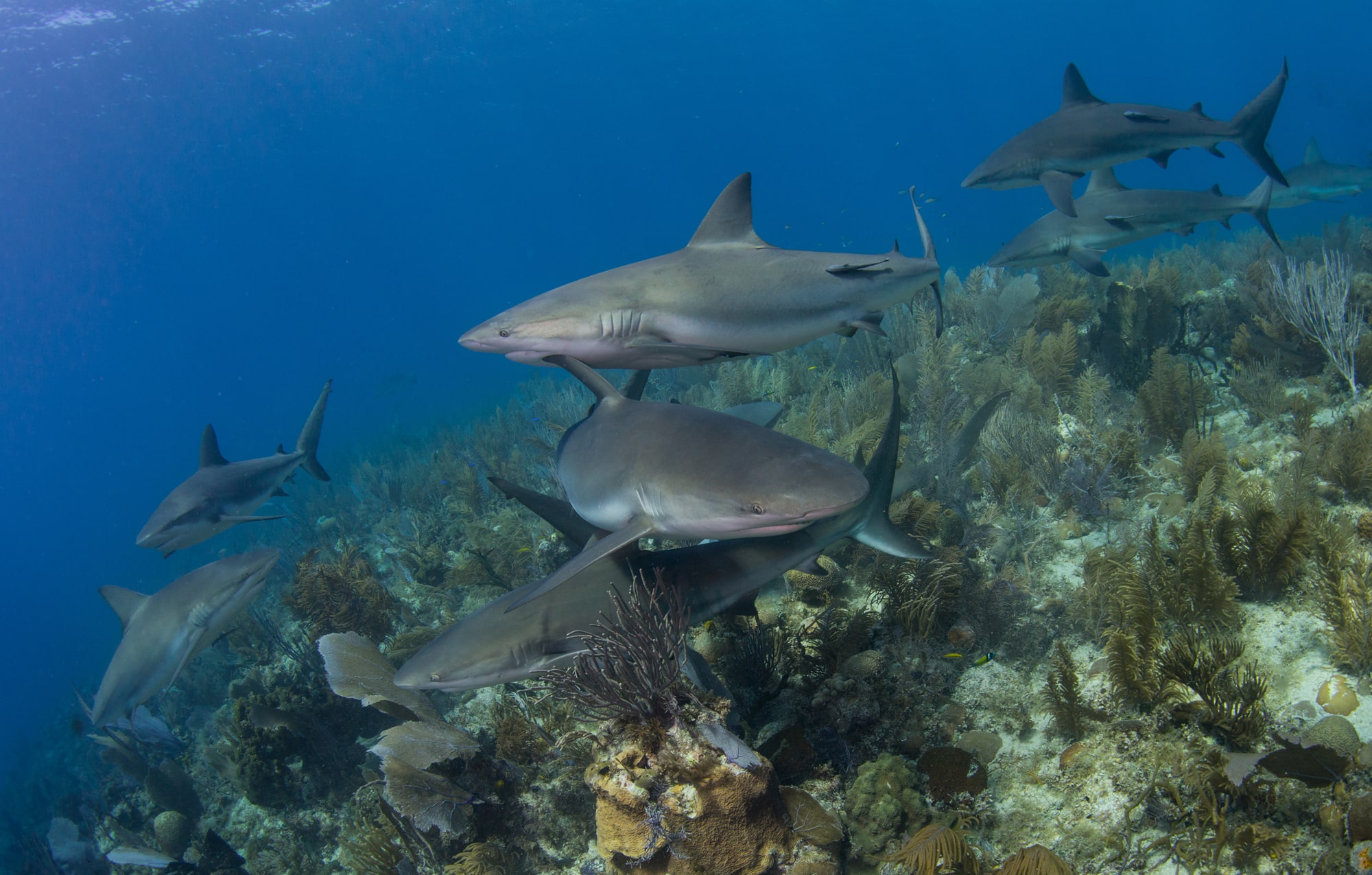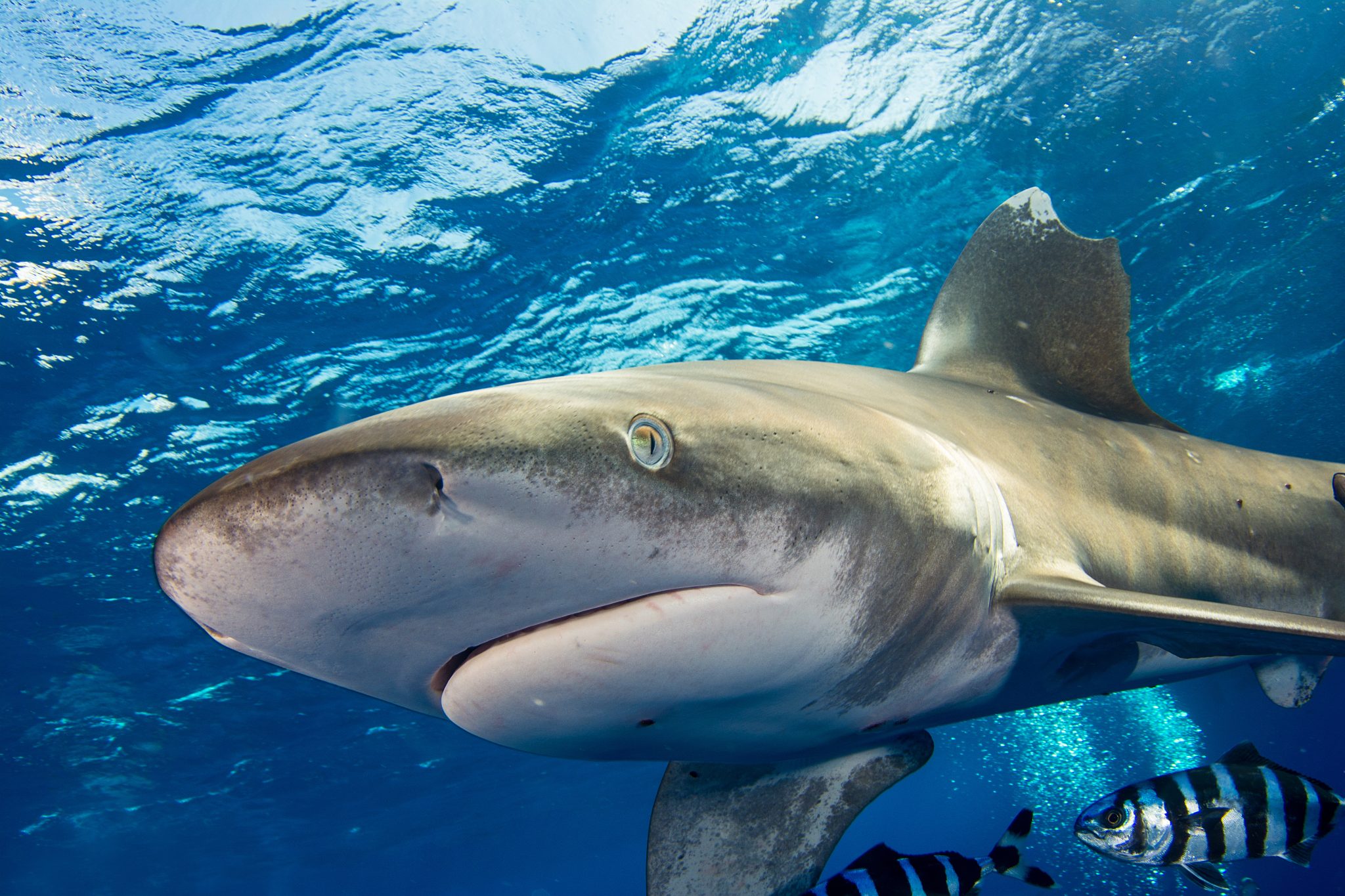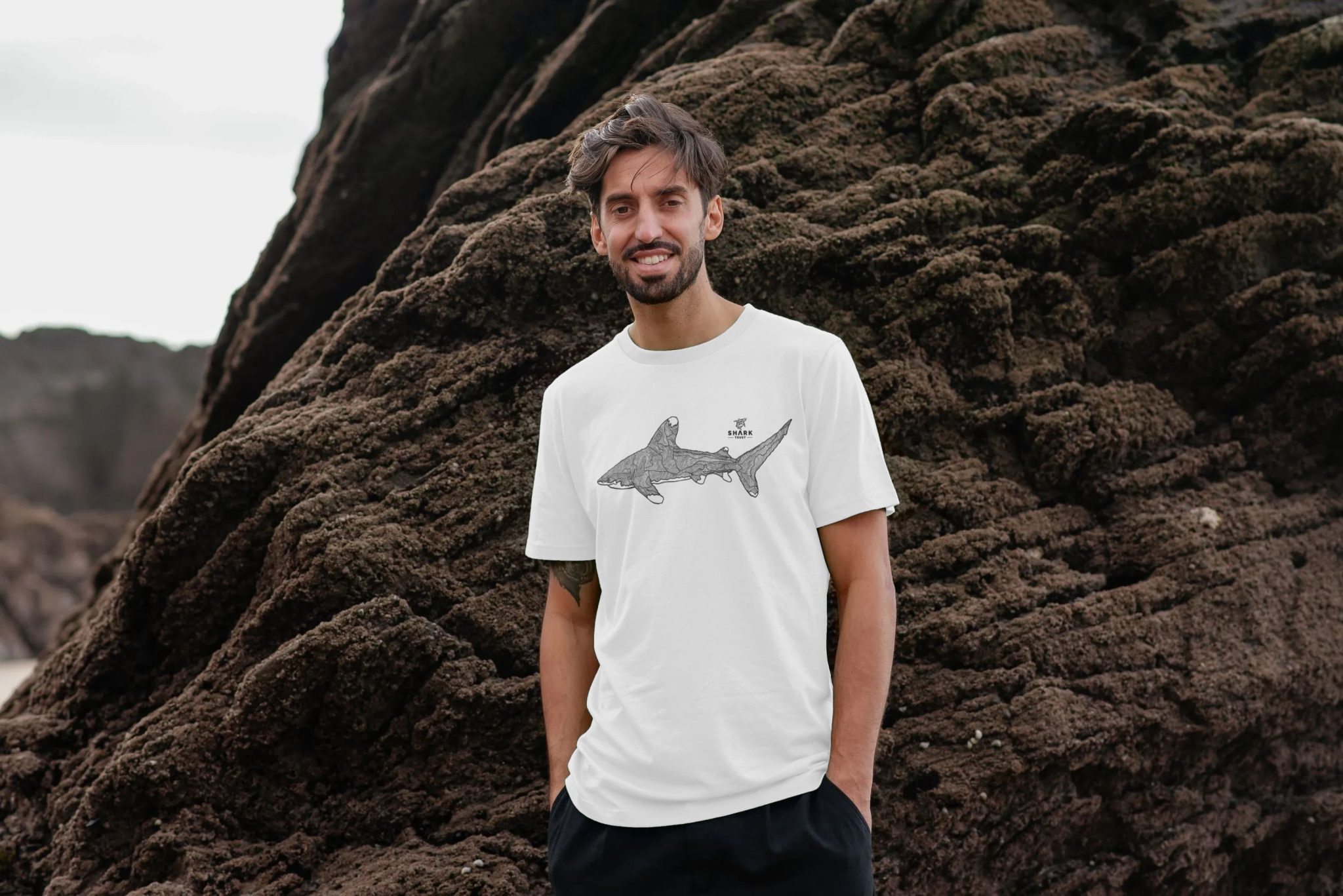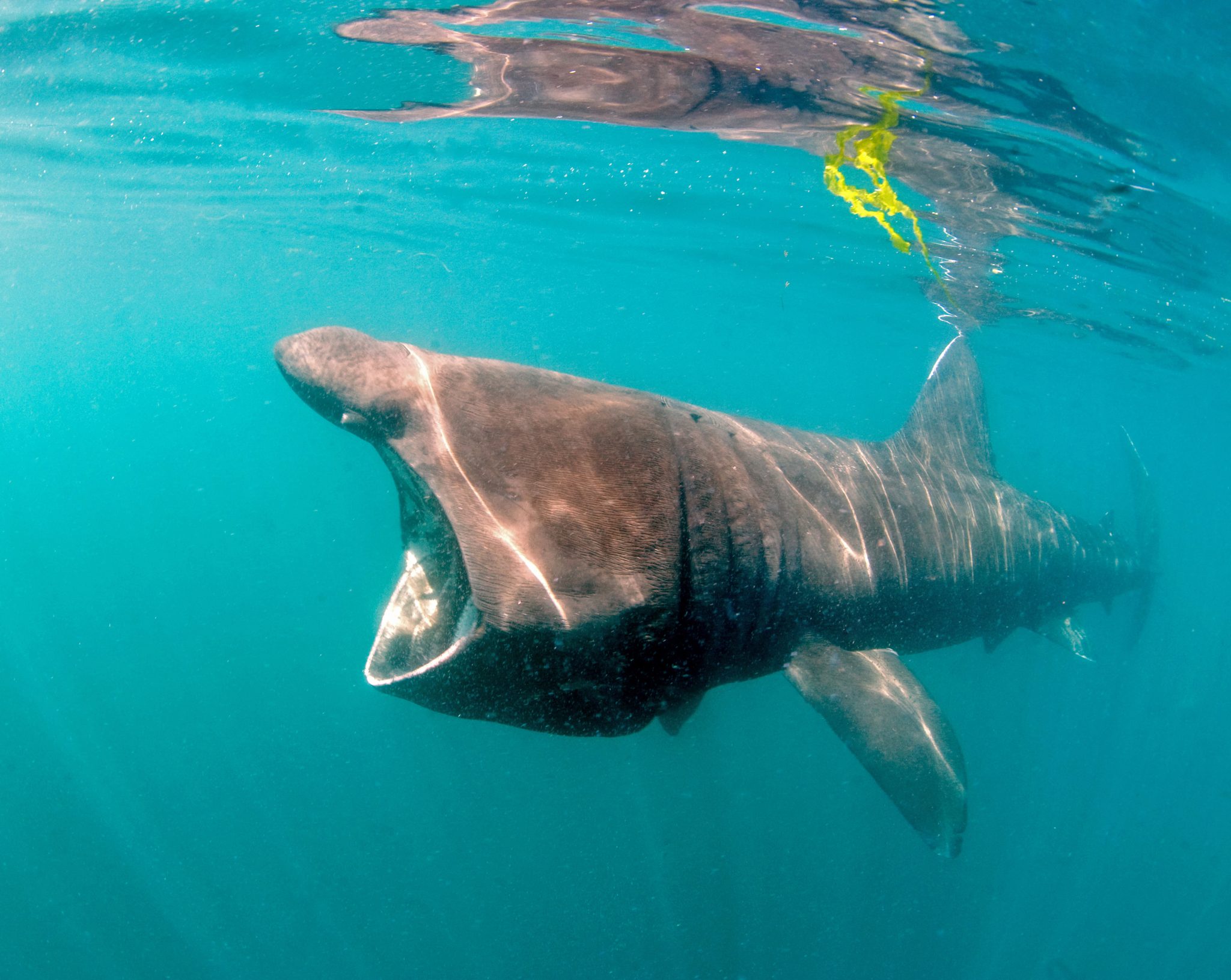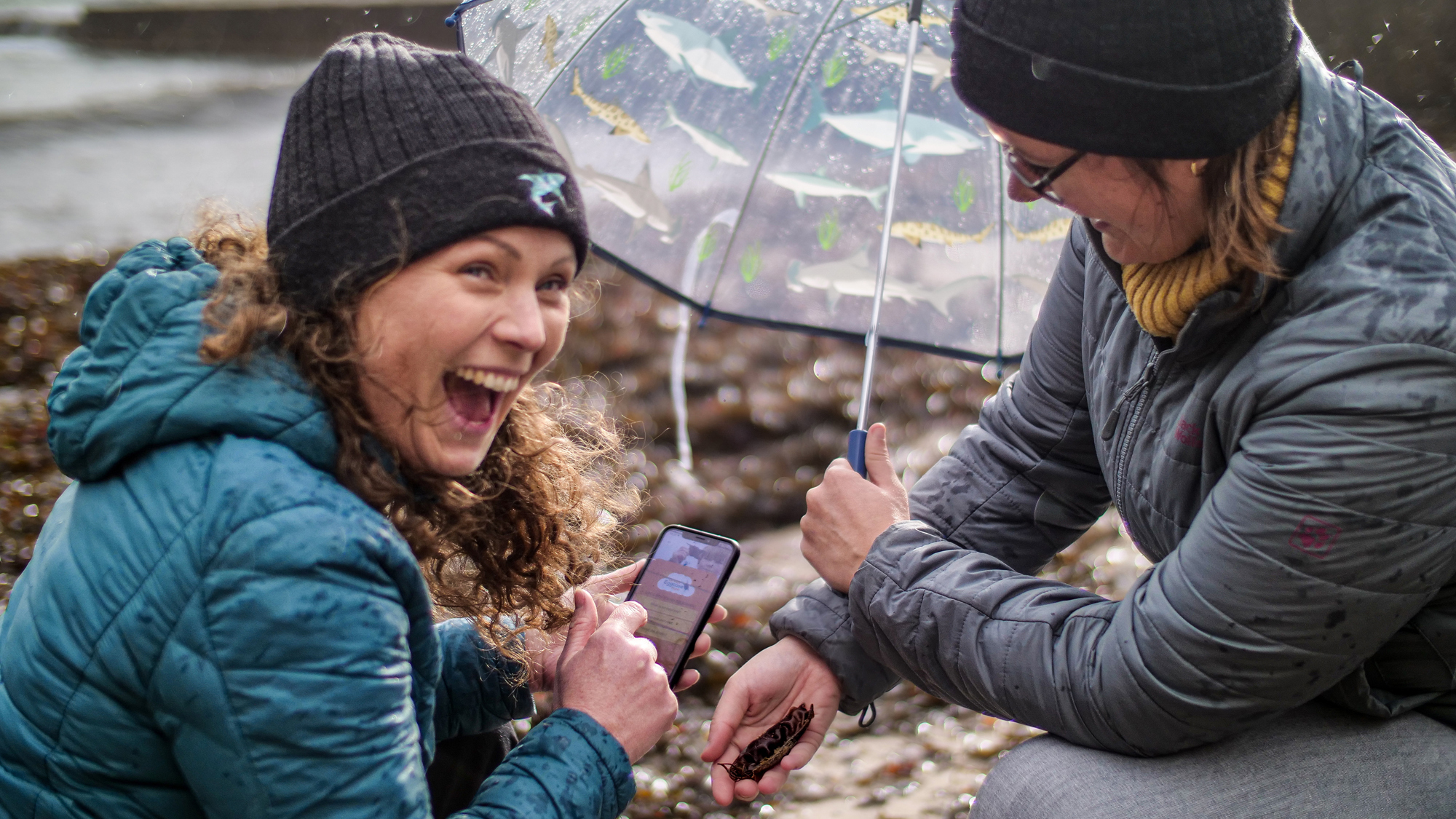Marine Life & Conservation
Unraveling the mysteries of the Saba Bank
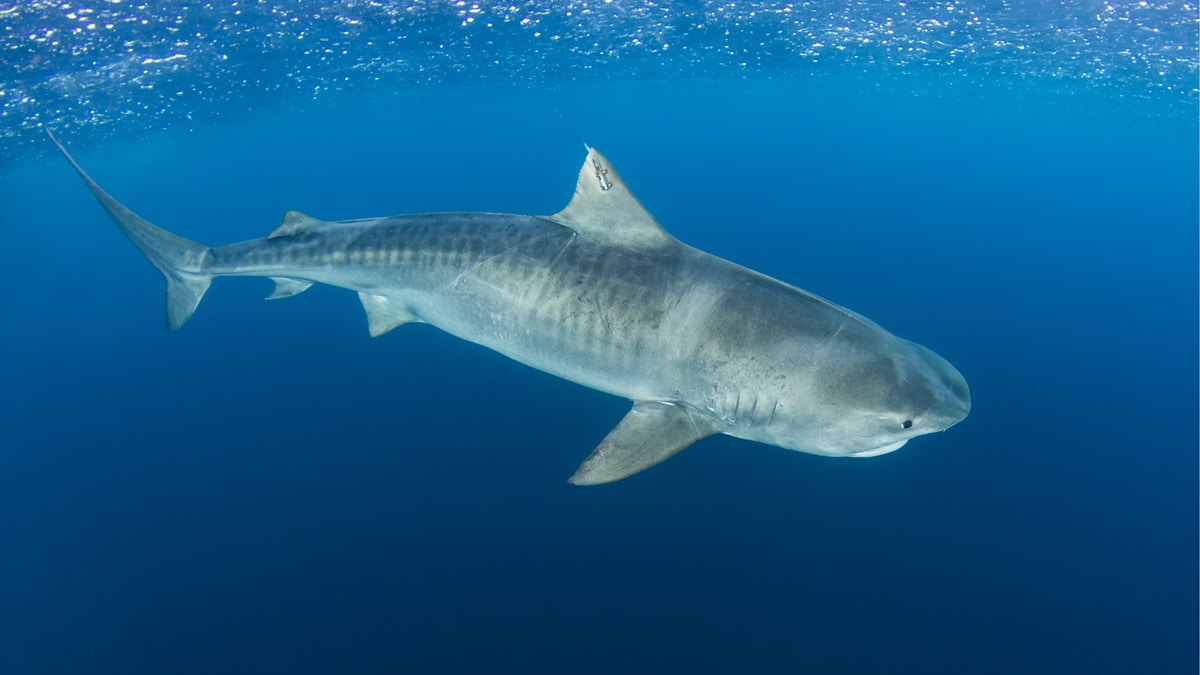
For the first time on the Saba Bank, an expedition team was able to successfully assess the shark diversity by attaching five satellite tags and confirming pregnancy stages by ultrasound of two species of sharks. This research advancement resulted in assessing 56 sharks, including 16 Tiger sharks with one confirmed early-stage pregnancy, and the first tagged male in the region. These details indicate that the Saba Bank’s important role in the shark populations of the North-Eastern and wider Caribbean Region have yet to be unlocked. This information is crucial to better protect sharks within the Dutch Caribbean’s Yarari Marine Mammal and Shark Sanctuary as well as beyond.
Dutch Caribbean Nature Alliance (DCNA) along with the Protected Area Management Organizations of the Dutch Caribbean: Saba Conservation Foundation (SCF), Nature Foundation St. Maarten (NFSXM), St. Eustatius National Parks (STENAPA), STINAPA Bonaire, the Aruba National Parks Foundation (FPNA), the Dutch Caribbean Nature Alliance (DCNA) and World Wildlife Fund for Nature- The Netherlands (WWF-NL) led a team on the Saba Bank in collaboration with Arizona State University, University of Groningen, Beneath the Waves and funded by the Biodiversity Fund of the World Wildlife Fund for Nature- The Netherlands (WWF-NL) .
This week-long ocean research expedition aimed to understand the stages of the reproductive cycle of tiger sharks on the Saba Bank. Tadzio Bervoets, Director of DCNA and expedition leader adds: “It is critical to collect the data necessary to advance the conservation actions for species of sharks in the Caribbean Region and with the data collected over the last week we have been able to get a clear picture of the important role the Saba Bank plays.”
This expedition built upon previous research and expertise from collaborating scientists.
Throughout the week, the team was able to deploy five satellite tags on the dorsal fin of tiger sharks which will allow tracking of the animals over an extended period of time. The ultrasounds which were taken using high technology imagery to determine the maturity and pregnancy stage supported by Brooke Anderson, Ph.D. candidate of Dr. James Sulikowski’s Lab, Arizona State University show that the Saba Bank is a reproductive area for IUCN Near Threatened listed species tiger and the IUCN endangered listed Caribbean Reef Shark. One of the female tiger sharks was confirmed with an early stage pregnancy and boasted a total length of 251cm. This multidisciplinary research approach is necessary for taking the first steps in understanding the reproductive life cycle for the species in the region.
One of the mysteries which resulted was the first tagged male on the Saba Bank sized at 306 cm and later named Maestro Angelo. While it is common to find females, it was surprising to encounter male tiger sharks during the research. Due to the lack of research done previously on these sharks on the Saba Bank, it became evident as to why there is a need to emphasize the importance and need for scientific research into these species.
Expeditions brought forward by the protected area management organizations, such as this one, support the necessary research needed for data-driven management solutions. These results will be used to help steer future research activities, inform local governments on the significant impact these species and their habitats have on ecotourism, and ultimately strengthen conservation policies. Ayumi Kuramae, Saba Bank Management Unit Officer shared the importance of this study:
“Through previous tagging expeditions it was clear that the tiger sharks tagged on the Saba Bank can travel as far south as Grenada, crossing many nations’ borders. This shows the importance of protecting the species not only in our waters, but region wide. Seeing male and female tiger sharks together of different life stages, shows us that protection of these species in our water is vital since we may be protecting the future generation of tiger sharks in the region. A decrease in the number of sharks can affect the overall fish stocks which leads to a disturbed natural balance in the sea. Saba, for example, highly depends on fisheries and dive tourism as part of the local economy which also relies on a healthy fish stocks. Thus, understanding the role of these apex predators is extremely important.”
After gazetting, the Yarari Marine Mammal and Shark Sanctuary will encompass the exclusive economic zone waters of the Saba Bank along with Saba, Bonaire and Statia. This sanctuary has the intention to provide a safe place for these animals, but without supportive data and knowledge, it is difficult to ensure they receive the appropriate protection measures. In order to survive, tiger sharks may use the Saba Bank as a key habitat for different stages of their life cycle but are known to travel to other regions during different life stages, making them a transboundary species. This expedition will help identify where larger, multi-national marine protected areas across the Caribbean should be to protect these species during their whole life cycle.
For more information about the work of the DCNA visit their website by clicking here
Images: Daniel Norwood
Marine Life & Conservation
Leading UK-based shark conservation charity, the Shark Trust, is delighted to announce tour operator Diverse Travel as a Corporate Patron
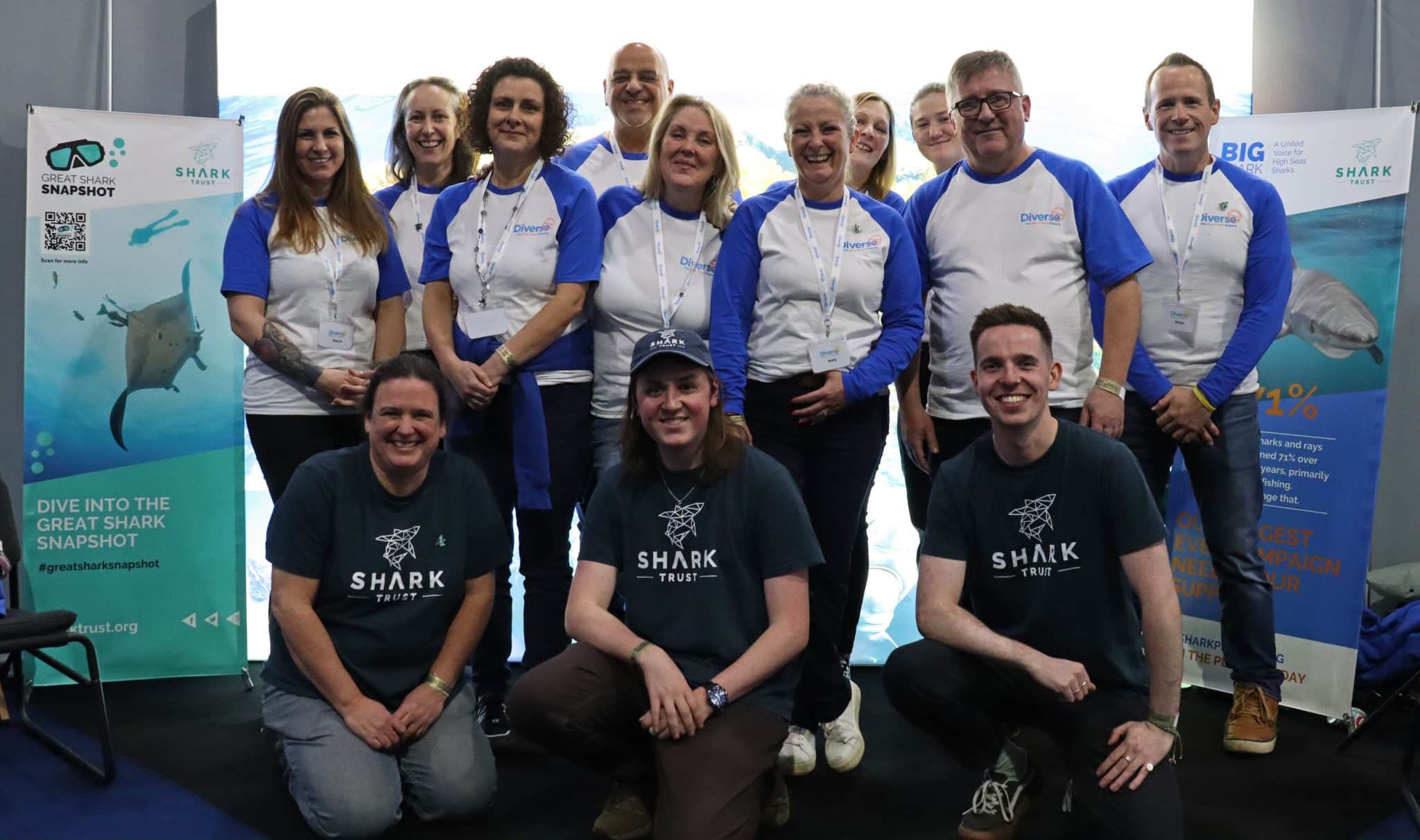
 Corporate Patrons provide a valuable boost to the work of The Shark Trust. The Trust team works globally to safeguard the future of sharks, and their close cousins, the skates and rays, engaging with a global network of scientists, policymakers, conservation professionals, businesses and supporters to further shark conservation.
Corporate Patrons provide a valuable boost to the work of The Shark Trust. The Trust team works globally to safeguard the future of sharks, and their close cousins, the skates and rays, engaging with a global network of scientists, policymakers, conservation professionals, businesses and supporters to further shark conservation.
Specialist tour operator Diverse Travel has operated since 2014 and is committed to offering its guests high quality, sustainable scuba diving holidays worldwide. Working together with the Shark Trust will enable both organisations to widen engagement and encourage divers and snorkellers to actively get involved in shark conservation.
“Sharks are truly at the heart of every diver and at Diverse Travel, we absolutely share that passion. There is nothing like seeing a shark in the wild – it’s a moment that stays with you forever!” says Holly Bredin, Sales & Marketing Manager, Diverse Travel.
“We’re delighted to celebrate our 10th year of business by becoming a Corporate Patron of the Shark Trust. This is an exciting partnership for Diverse and our guests. We will be donating on behalf of every person who books a holiday with us to contribute towards their vital shark conservation initiatives around the world. We will also be working together with the Trust to inspire divers, snorkellers and other travellers to take an active role – at home and abroad – in citizen science projects and other activities.”
Paul Cox, CEO of The Shark Trust, said:
“It’s an exciting partnership and we’re thrilled to be working with Diverse Travel to enable more divers and travellers to get involved with sharks and shark conservation. Sharks face considerable conservation challenges but, through collaboration and collective action, we can secure a brighter future for sharks and their ocean home. This new partnership takes us one more valuable step towards that goal.”
For more information about the Shark Trust visit their website here.
For more about Diverse Travel click here.
Marine Life & Conservation
Shark Trust Asks Divers to help with Shark Sightings this Global Citizen Science Month
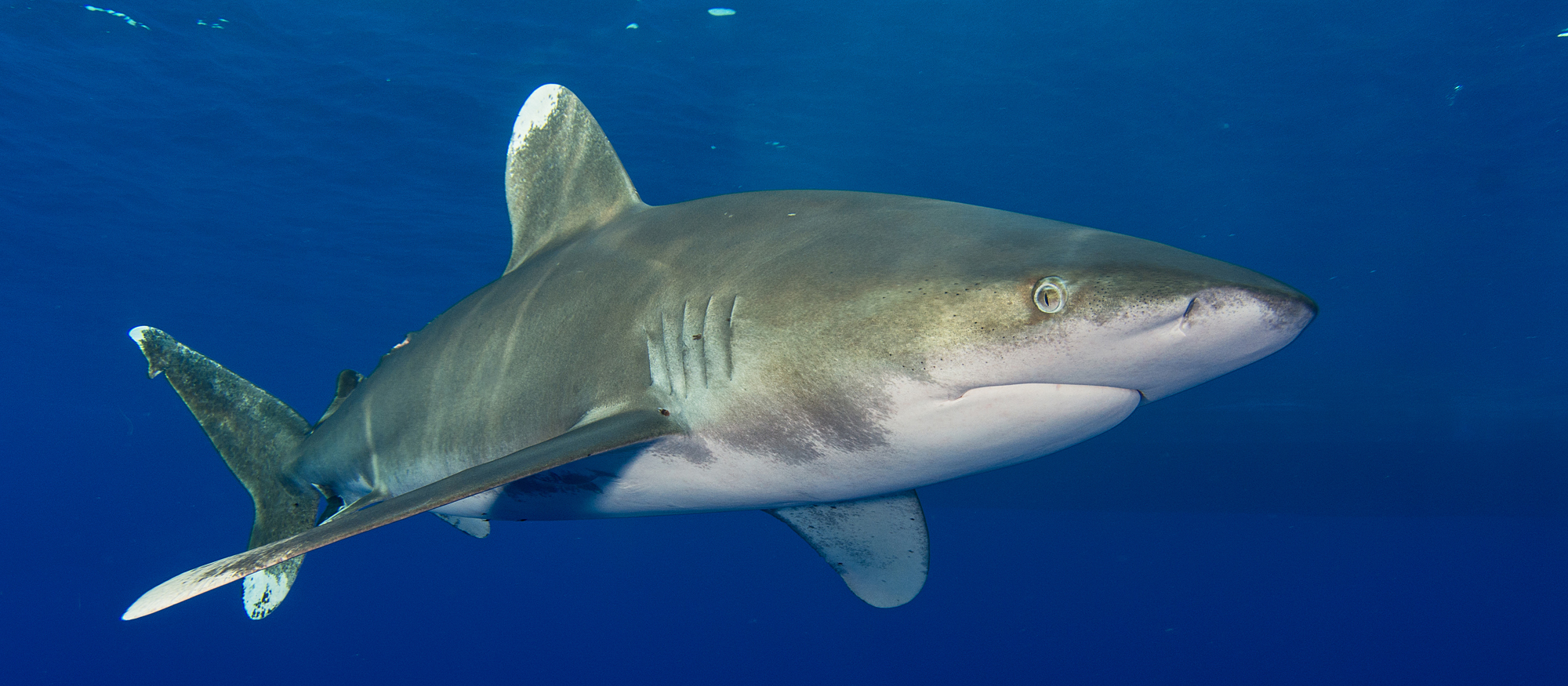
 Whether you are stuck for ideas of what to do with the kids or are off on the dive trip of your dreams. You can get involved in Citizen Science Month and help the Shark Trust by providing vital data about sharks are rays both close to home and further afield.
Whether you are stuck for ideas of what to do with the kids or are off on the dive trip of your dreams. You can get involved in Citizen Science Month and help the Shark Trust by providing vital data about sharks are rays both close to home and further afield.
In addition to reporting the sharks and rays you see on your dives, the eggcases you find on the beach, the Shark Trust is looking for some specific data from divers who are asked to report any Oceanic Whitetip and Basking Sharks.
Oceanic Whitetip Sharks
The Shark Trust are looking specifically for Oceanic Whitetip Shark sightings over the coming weeks and months. So, if you are diving anywhere in the world, please report your sightings via the website or app.
Website: https://recording.sharktrust.org/
App: Search The Shark Trust in your app store
The Oceanic Whitetip. Known for their incredibly long dorsal and pectoral fins, this species was once the most abundant oceanic-pelagic species of shark on the planet.
Large and stocky, they are grey or brown above, and white below and famous for their huge rounded first dorsal fin and paddle-like pectoral fins. The fins also highly prized within the shark fin trade. Whilst they are mostly solitary, Oceanic Whitetips do occasionally hunt in groups.
An inquisitive species, they were easy prey for fisheries. Combined with their low reproductive rate, they were inevitably at high risk of population depletion. And declines of up to 99% have been reported in certain sea areas. They are listed as Critically Endangered on the IUCN Redlist (2019).
Conservation efforts to discourage further declines include listing on CITES Appendix II and CMS Appendix I. They’re also the only species prohibited from take by all the Tuna RFMOs (Regional Fisheries Management Organisations). However, these measures do not mean that Oceanic Whitetips are not still caught – whether targeted or as bycatch – in some parts of the world. With populations declining at such a high rate, effective implementation of management measures is essential to ensure that the species can recover.
If you are lucky enough to get an image of an Oceanic Whitetip and you record your sighting on the Shark Trust app or website YOU CAN WIN! All images submitted with sightings, that also give consent to use in conservation messaging, will be in with a chance to win an Oceanic Whitetip T-shirt and mug. The competition will run until the end of “Shark Month” in July – so keep those sightings (and images) coming in.
Basking Sharks
Basking Shark (Cetorhinus maximus) season is upon us, and the Shark Trust is asking everyone to keep an eye out for these majestic giants over the summer months. If you see any, you can record your sighting to the Basking Shark Sightings database.
Each year, these mighty fish return to British waters to feed on plankton. You may see one, (or a few if you’re really lucky) from around April-October. They can be seen feeding at the surface of the water, where they look like they’re basking in the sun. Thus, their name!
Sighting hotspots around the British Isles include southwest England, Isle of Man, north coast of Ireland, and western Scotland. The Sea of the Hebrides is the most prolific sightings area in Scotland, but they have been spotted all around the coast and have even ventured into some of the sea lochs. The Shark Trust has received thousands of sightings since the Basking Shark project began, but more data is needed to truly understand what is going on with population numbers and distribution. You can help by recording your sightings this summer.
Great Eggcase Hunt
The Shark Trust has an Easter Egg Hunt with a difference for you to try. Take part in the Great Eggcase Hunt and get involved with a big citizen science project that helps shark, ray and skate conservation. And it’s an enjoyable activity for all the family.
The Shark Trust also want snorkellers and divers to record their underwater eggcase findings. Underwater records help pinpoint exactly where sharks and skates are laying their eggs and can help link to beach records. Learning the depth and substrate that they lay on also helps better understand the species.
Find out more: https://www.sharktrust.org/great-eggcase-hunt
Whether you are diving, snorkelling or exploring on the beach you can take part in Citizen Science Month and get actively involved in shark and ray conservation. Find out more: www.sharktrust.org
-

 News3 months ago
News3 months agoHone your underwater photography skills with Alphamarine Photography at Red Sea Diving Safari in March
-

 News2 months ago
News2 months agoCapturing Critters in Lembeh Underwater Photography Workshop 2024: Event Roundup
-

 Marine Life & Conservation Blogs2 months ago
Marine Life & Conservation Blogs2 months agoCreature Feature: Swell Sharks
-

 Blogs2 months ago
Blogs2 months agoMurex Resorts: Passport to Paradise!
-

 Blogs2 months ago
Blogs2 months agoDiver Discovering Whale Skeletons Beneath Ice Judged World’s Best Underwater Photograph
-

 Gear News3 months ago
Gear News3 months agoBare X-Mission Drysuit: Ideal for Both Technical and Recreational Divers
-

 Gear Reviews2 months ago
Gear Reviews2 months agoGear Review: Oceanic+ Dive Housing for iPhone
-

 Marine Life & Conservation2 months ago
Marine Life & Conservation2 months agoSave the Manatee Club launches brand new webcams at Silver Springs State Park, Florida


